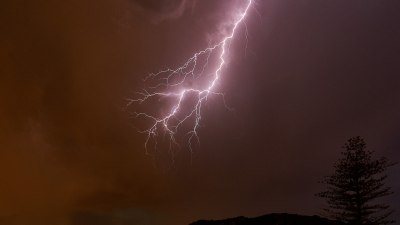Can Lightning Strike Without Rain? Dry Lightning Explained
Explore the phenomenon of dry lightning, its causes, effects, and safety tips to stay protected during storms.

Lightning is one of nature's most powerful displays, often accompanied by thunder and, typically, rain. However, there is a fascinating phenomenon known as 'dry lightning,' where lightning can occur without any precipitation. This occurrence is not only intriguing from a meteorological perspective but also critical to understanding the potential hazards associated with lightning strikes. In this article, we'll explore what dry lightning is, how it forms, its implications, and safety measures to consider during such events.
What is Dry Lightning?
Dry lightning refers to lightning strikes that happen without accompanying rain reaching the ground. This phenomenon usually occurs in deserts or arid regions but can occur in various environments where thunderstorms develop. With the right atmospheric conditions, dry lightning can be generated in clouds that are too thin or not producing rain at the Earth's surface. The lack of rain does not imply the absence of thunderstorm activity; rather, it indicates a specific set of conditions leading to cloud electrification and subsequent lightning without moisture.
How Does Dry Lightning Occur?
Understanding dry lightning requires some knowledge about thunderstorm formation and the electrification of clouds. Thunderstorms develop when warm and moist air rises and cools, leading to the condensation of water vapor into clouds. During this process, ice particles within the cloud can collide and create an electric charge. The intensity of this charge builds as the storm develops, eventually resulting in a discharge of electricity in the form of lightning.
In many cases, the clouds producing lightning may not develop significant rainfall to reach the ground. This can happen in several scenarios: when the storm is very high-based or when the updrafts within the cloud are strong enough to evaporate any raindrops before they descend. The key factor is that dry lightning typically occurs in conditions where there is enough lift and energy in the atmosphere to create electrical discharges without the moisture necessary for rain.
Types of Dry Lightning
Dry lightning primarily manifests in two forms: cloud-to-ground lightning and intra-cloud lightning. Cloud-to-ground lightning is the type most familiar to people, often seen as dazzling strikes that hit the Earth's surface. In contrast, intra-cloud lightning occurs within the thunderstorm itself, illuminating the clouds without striking the ground. Both types can occur during dry lightning events, but the risks associated with each can differ significantly.
Risks Associated with Dry Lightning
One of the most significant risks linked to dry lightning is its potential to ignite wildfires. For instance, in the western United States, regions prone to dry lightning are particularly vulnerable to large-scale wildfires. The sudden and intense energy from a lightning strike can ignite dry vegetation, leading to rapid fire spread, especially in drought-affected areas. Firefighters often need to prepare extensively for such situations, as ignitions can occur miles away from the storm cell itself.
Additionally, dry lightning can pose hazards to individuals caught outdoors during thunderstorms, especially in areas where fire risks are high. Camping, hiking, or engaging in any outdoor activities during dry lightning conditions can lead to dangerous situations, making awareness of weather patterns crucial.
Predicting Dry Lightning Events
Predicting dry lightning is challenging due to the complexities of atmospheric dynamics. Meteorologists use weather models and radar systems to identify conditions conducive to dry lightning, focusing on temperature, humidity, wind patterns, and current storm activity. Satellite imagery can also play a role, helping scientists observe cloud formations and identify potential dry lightning occurrence areas. However, even with advanced technology, predicting the exact location and timing of dry lightning remains an area of ongoing research.
Safety Measures During Dry Lightning Events
Awareness and preparation are key to staying safe during dry lightning events. Here are some safety measures to consider:
- Seek Shelter: If you hear thunder or see lightning, find shelter immediately. Indoors, stay away from windows, electrical appliances, and plumbing.
- Avoid Open Spaces: If you're outdoors, avoid open fields, tall trees, and metal structures. Find a low-lying area such as a ditch, but be cautious of flooding if heavy rain is also occurring nearby.
- Stay Informed: Monitor weather alerts and forecasts, especially during dry seasons or in areas prone to wildfires. Having a weather app or a NOAA weather radio can keep you updated.
- Plan Ahead: If you're planning outdoor activities in regions known for dry lightning, consider the season and weather patterns. Have an evacuation plan in place and know the nearest safe areas.
- Educate Others: Share knowledge about dry lightning risks with friends, family, and fellow outdoor enthusiasts. Understanding the dangers can help increase safety awareness in your community.
Dry lightning is a fascinating but potentially dangerous meteorological phenomenon that showcases the complexity of storm systems. While lightning is often associated with rain, dry lightning serves as a reminder of the power of nature even under seemingly desolate conditions. By understanding its causes, risks, and safety measures, individuals can better prepare themselves for the unpredictable nature of thunderstorms and protect themselves from the associated hazards. Staying informed and vigilant during dry lightning events ensures safety and helps reduce wildfires in affected areas.











